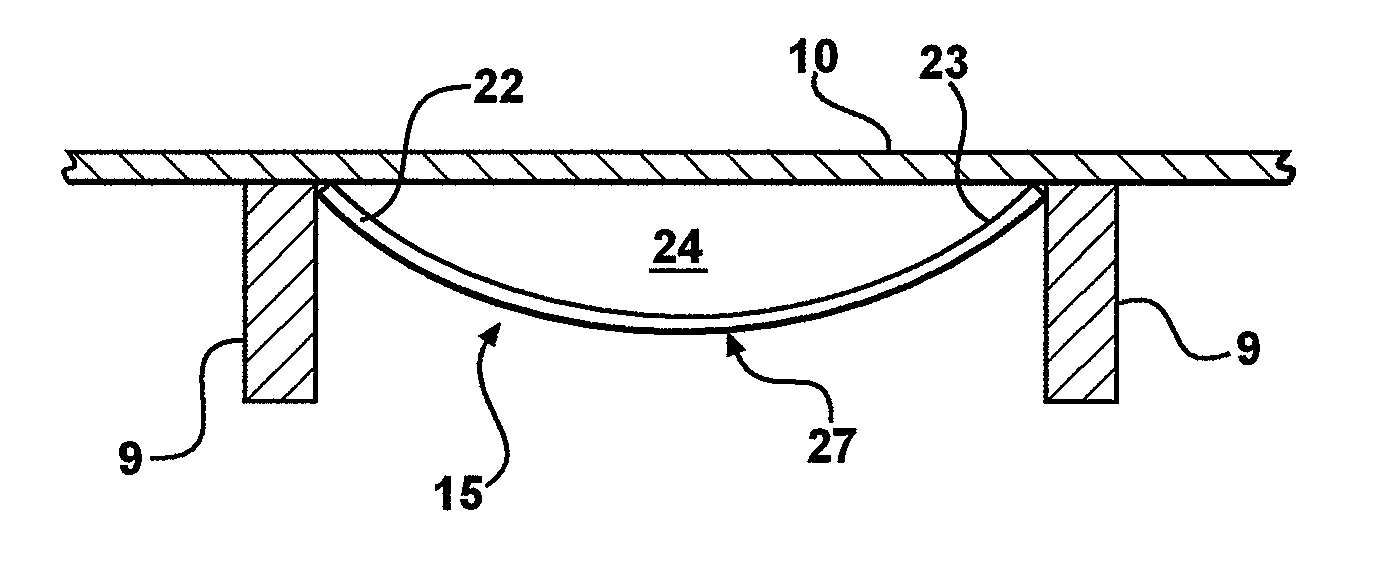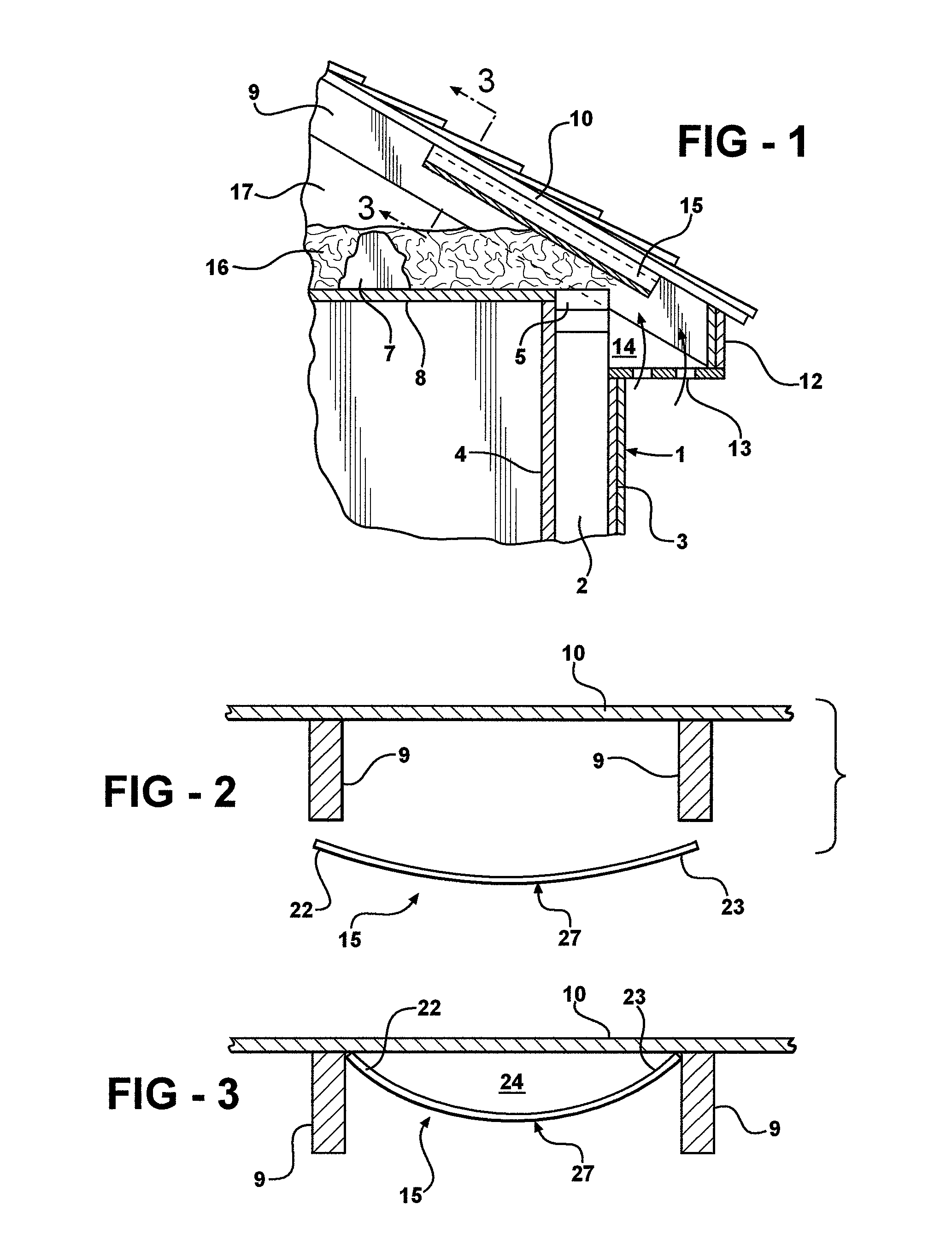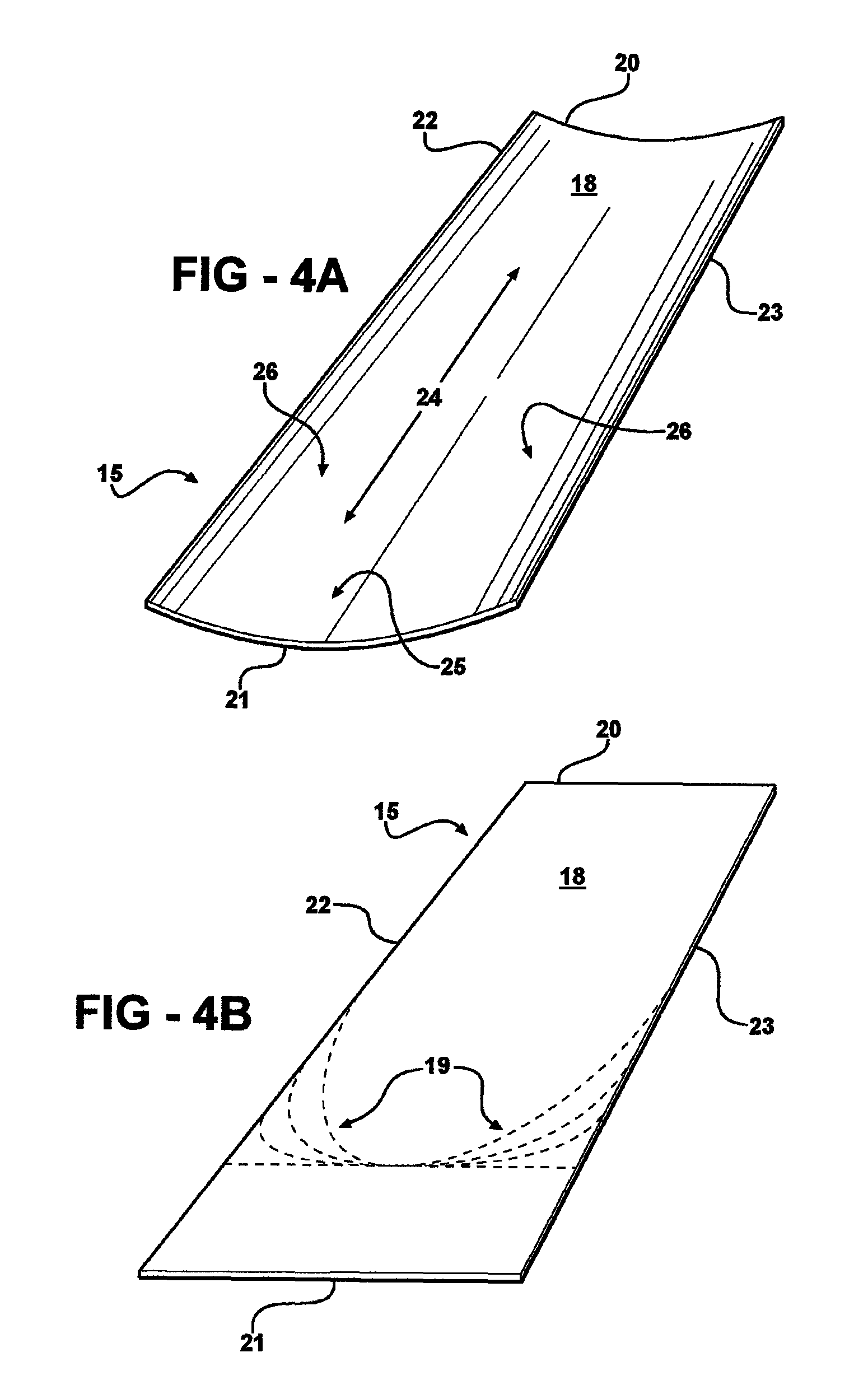Radiant baffle/collector for roof construction and retrofit
a technology for collecting and roofs, applied in the field of baffle systems, can solve the problems of increasing the cost of construction, and high cost of thick structures
- Summary
- Abstract
- Description
- Claims
- Application Information
AI Technical Summary
Benefits of technology
Problems solved by technology
Method used
Image
Examples
Embodiment Construction
[0040]The present invention relates to the ventilation of attics and cathedral ceilings and to controlling the transfer of heat energy between the roof surface and the structure below, e.g. attic space or cathedral ceiling. More particularly, the present invention relates to a baffle system that can be used to provide ventilation to attics and roofs at the time of new roof construction or retrofit. The present invention further provides for the reduction of radiant heat transfer from the roof surface inward toward the structure below, including the attic and living space that might be air conditioned in the summer, and also provides for the reduction of heat transfer from the living space and / or attic outward toward the roof surface in the winter. In addition, the present invention provides for the harvesting of solar thermal energy for solar heating systems, such as but not limited to, domestic water heating, in conjunction or in combination with the baffle systems.
[0041]According ...
PUM
 Login to View More
Login to View More Abstract
Description
Claims
Application Information
 Login to View More
Login to View More - R&D Engineer
- R&D Manager
- IP Professional
- Industry Leading Data Capabilities
- Powerful AI technology
- Patent DNA Extraction
Browse by: Latest US Patents, China's latest patents, Technical Efficacy Thesaurus, Application Domain, Technology Topic, Popular Technical Reports.
© 2024 PatSnap. All rights reserved.Legal|Privacy policy|Modern Slavery Act Transparency Statement|Sitemap|About US| Contact US: help@patsnap.com










